The graphs below illustrate how the changes in students’ engagement in the discussion correspond to the changes in Hidy’s pedagogical design.
|
Open Exploration
|
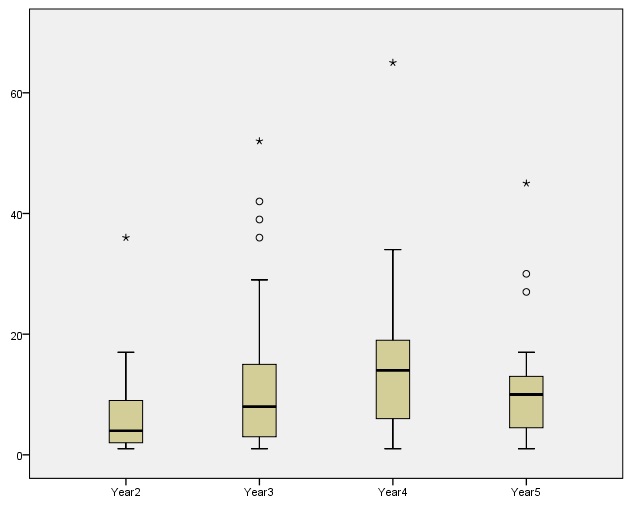
Figure 1. Number of notes created by Hidy’s student |
There was a rising trend in the median of number of notes created. In each year, there was at least one student who created more than 20 notes (Fig. 1). This shows the contributions made by students were generally uneven. |
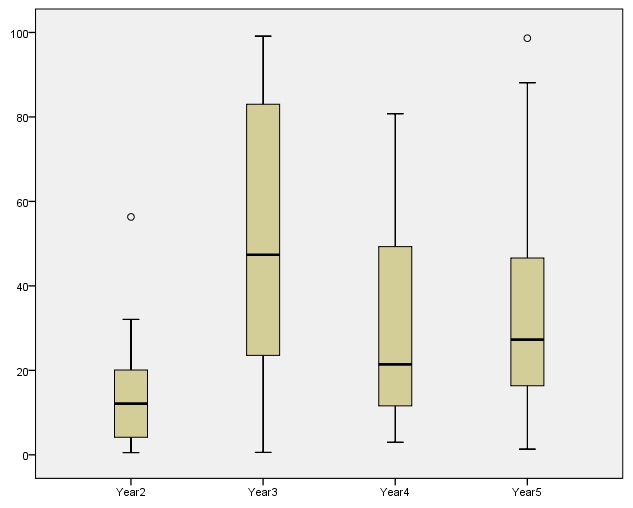
Figure 2. Percentage of notes read by students |
The percentage of notes read by students varied (Fig. 2). It can be seen that some students only read a small percentage (below 10%) of notes while some students read a large number (more than 80%) of notes. The biggest increase in the median percentage of notes read was between Years 2 and 3, and that of Years 4 and 5 were at a similar level. The number of notes created and percentage of notes read from Year 3 to 5 were maintained at a level higher than that of Year 2. This corresponded to the change in Hidy’s pedagogical design. In Year 3, Hidy used an authentic scenario and asked students to generate their own inquiry questions. Students were also asked to formulate their own criteria of good notes/ discussion. |

Figure 3. Percentage of notes linked |
There was a rising trend in the median percentage of notes linked (Fig. 3). The median of percentage of notes linked reached 100% in Year 5. However, there were some singletons (i.e. notes that are not linked to any other notes). Therefore, it can be seen that students’ ability to connect ideas had improved, but not every student was able to do so. |
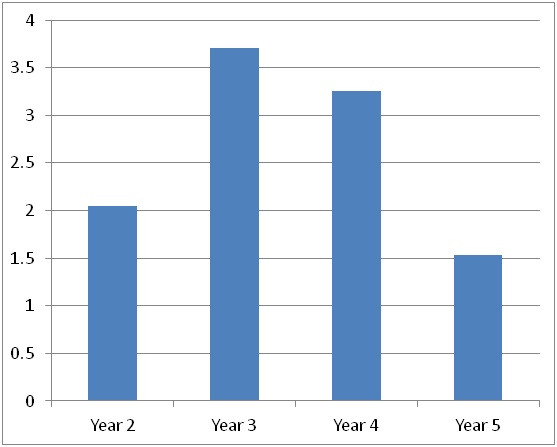
Figure 4. Average number of notes per thread |
There was a substantial rise in the average number of notes per thread in Year 3 and it was maintained in Year 4 (Fig. 4). However, the average number of notes per thread in Year 5 decreased to a level lower than that of Year 2. In Year 5, comparing with the other years, the number of notes created was not particularly low and the average percentage of notes linked was high. This shows that students did not build on the same seed notes, but tended to build on different seed notes, which created many short threads. A possible explanation for this phenomenon is the relatively short duration of the module, which did not provide much time for students to build on. |
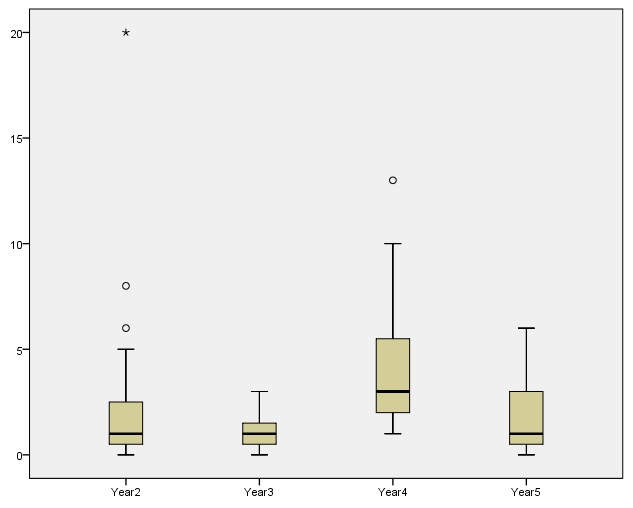
Figure 5. Number of scaffolds used |
Generally, students utilized more scaffolds in Years 4 and 5 (Fig. 5). |

Figure 6. Social network graphs showing the interaction of notes in Years 2 and 3 |
In Year 2, the octopus-like figure in the social network diagram shows that students tended to build on the teacher’s note, which is in the centre (Fig. 6). In contrast, the spider web-like figure in the Year 3 social network diagram shows more connections between notes, which indicates that students built on each other’s notes (Fig. 6). |
|
Progressive Inquiry
|

Figure 7. Number of note revisions |
There was a rising trend in the median number of note revisions (Fig. 7). Every year, there were some students who made more revisions than the most students in the class. This shows that some students were more active than others in working continuously to improve ideas. |
|
Rise Above
|
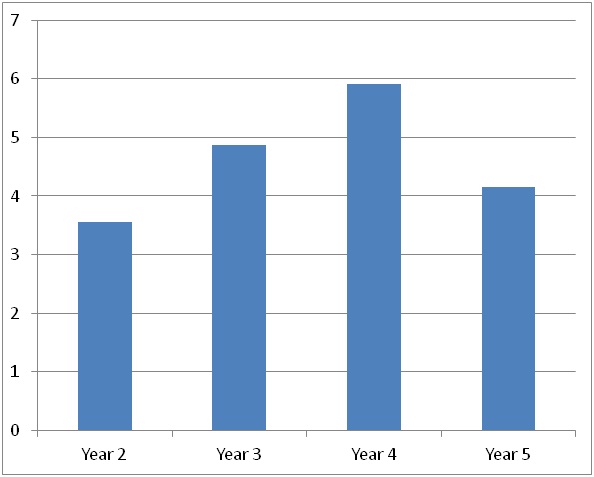
Figure 8. Average depth of discussion thread |
On average, the class had more depth to their online discussions in terms of add-on notes in Years 3 and 4 (Fig. 8). The decrease in Year 5 can be attributed to the relatively short duration of the module as mentioned before, which did not provide much time for students to build on. Nevertheless, the rising trend from Year 2 to 4 shows that students were offering, connecting, and expanding ideas. |